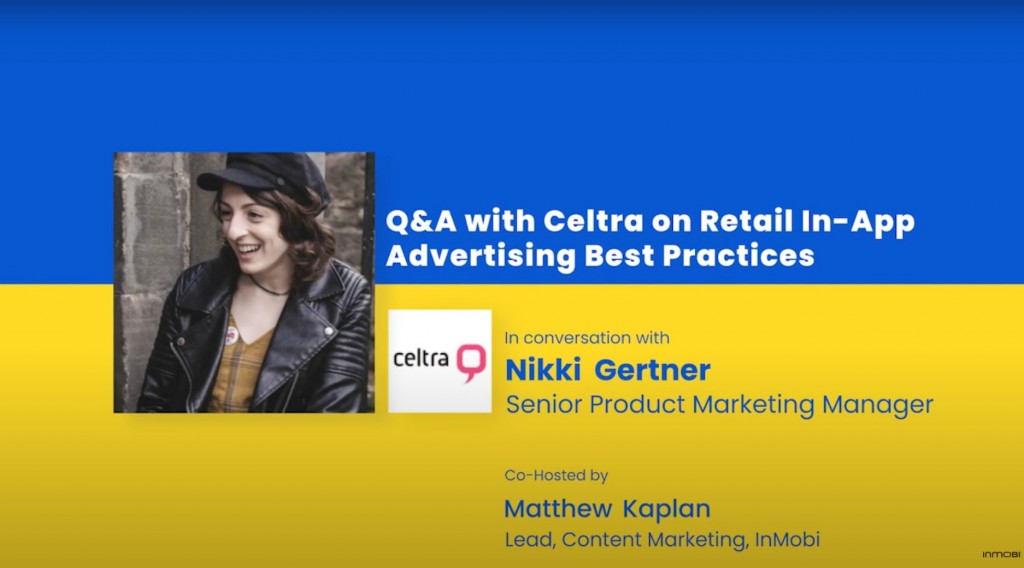Fuel campaign performance with laser-focused targeting

We recently chatted with Nikki Gertner, Senior Product Marketing Manager at Celtra, to discuss about how retailers should approach digital advertising during the 2020 holiday shopping season and how they should be thinking about their mobile ad creatives.
This is a particularly interesting question, since more consumers than ever before will be taking their holiday shopping online this season. According to eMarketer, 81.5% of U.S. adults say that they will do more than half of their holiday shopping digitally, which means it’s a great time for retailers to encourage app downloads and signups.
In our research, (Celtra and Dynata Survey, August 2020) Celtra recently surveyed 1,000 U.S. consumers to uncover their feelings surrounding holiday creative. 33% of consumers responded that an entertaining story or message makes the creative more memorable. 28% of consumers responded that a high-quality design is what makes the message stick. 23% of consumers responded that they find the ad to be memorable when the brand is instantly recognizable. Interestingly enough, only 17% of consumers said that a lucrative offer makes the ad more appealing.
If you are looking to drive more app installs/UA with your creative this holiday season, focus on making a variety of messages which are entertaining and meaningful, with gorgeous high-quality design instead of relying solely on an incentive or free offer to encourage consumers to download your app.
In 2020, with the pandemic on our hands, it suddenly became much more difficult to drive in-store visits let alone any in-person meetings at all. 56% of shoppers say they visited fewer brick and mortar stores during the pandemic. One thing we can bet on is that increased e-commerce adoption is here to stay. Older shoppers, who perhaps had never shopped online before, are getting used to this new normal. For example, my parents (65+ baby boomers) started using Amazon for the very first time in 2020. They love to buy toys for my baby niece.
E-commerce is the new brick and mortar, and even more so during this unpredictable time. We suggest investing in creative experiences centered around online shopping as opposed to in-person shopping. Experiment with shoppable formats, and take advantage of the true value of audiences. Build creative experiences that encourage online conversion in a way that will resonate with the audience’s particular online shopping experience. Glossier is a great example of a brand that does this really well. A digital-first company, Glossier never had a brick and mortar store. They always release special, limited edition products during the holiday season which are designed specifically for the digital shopping experience of Black Friday and Cyber Monday.
According to a recent Comscore report, news consumption is still up: 28% higher than pre-pandemic levels in July/August. People are paying attention to what’s going on and ad creatives are not sitting idly by in the dark.
Something that we’re seeing a lot of at Celtra right now are creatives that make bold statements with words, using a typographical approach rather than visuals. This could be the right approach to take when you need a creative to make an impact, but stay consistent with a brand’s identity (namely colors and fonts). This approach also works well for making changes during a live campaign. For example, if you need to make a change on the fly, let’s say a copy change in a disclaimer about shipping, you can easily pop this content into a dynamic feed and apply it across all of your creative variants automatically.
Video is the main way we are connecting and communicating with each other now. I’m a big fan of the punk and hardcore scene here in NYC, so I’ve been watching as many livestream gigs as possible. For some artists, this approach works really well (especially if they’re playing something intimate and acoustic). But for others, the effect isn’t the same if you’re not standing right in front of them.
The same approach should be taken with banner and video ads: one size does not fit all. A modular ad product suite is the key to finding the optimal ways to drive performance. You need to be able to constantly innovate your offering and adopt a workflow where you can easily test various combinations to find the winning ones. This means not just ad products but also ad experiences: UX-friendly formats combined with video, animation and shoppable features. Plus, an efficient and scalable production process is crucial. Consistent design templates help production teams quickly apply new advertiser content during each campaign launch.
This is also a topic I’m really interested in these days, because we all know that third-party cookies are dying but we don’t yet know what is going to replace them for sure. This puts a big question mark on the future of creative personalization.
This is actually great news for publishers who have robust audience data to offer. As privacy changes sweep our industry, introducing the idea of customer-centric, consumer-owned data, advertisers will need to find new ways to target their audiences. They’ll turn to the publishers, who can offer lucrative audience data which matches their desired customer.
It’s possible that with the death of the third-party cookie, contextual personalization is going to make a big comeback in ad creative. Contextual targeting will be key, as opposed to behavioral targeting. Ads will be targeted based on adjacent content, rather than by previous site visits.
Matthew Kaplan has over a decade of digital marketing experience, working to support the content goals of the world’s biggest B2B and B2C brands. He is a passionate app user and evangelist, working to support diverse marketing campaigns across devices.


Register to our blog updates newsletter to receive the latest content in your inbox.